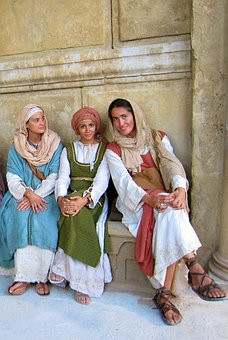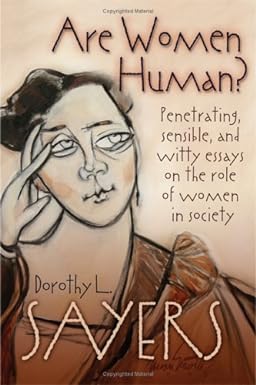How can we tell what a person thinks of you? We sense this not only by what they say but how they act towards us. Nonverbal communication is as important, is not more than verbal. Examining how a person interacts with you supports, or even contradicts, what they say.
People’s lives in first-century Judea could be tough, and women’s lives in a highly patriarchal society would be even more tough. (I will revisit this subject of the lives of women in future blogs in the coming year). From the accounts of Jesus in the four gospel books that tell his story, we read about Jesus, a rabbi, with a radically different view of women than most men of the time. Not only in how he thought but how he showed this in action. Who he met, had conversations with, and ate with was a statement as much as the sermon on the mount.
When writing my Leaving Bethany series of novels, I put myself in the place of Martha of Bethany, and what she thought when she first met Jesus and invited him into her home. What was it that attracted her, and her sister Mary, to follow him? What did they see in Jesus that they did not see in anyone else?
This is rather a lengthy quote, but I could never say it so precisely as Dorothy Sayers (1893–1957) has.
“Perhaps it is no wonder that the women were first at the Cradle and last at the Cross. They had never known a man like this Man—there never has been such another. A prophet and teacher who never nagged at them, never flattered or coaxed or patronised; who never made arch jokes about them, never treated them either as “The women, God help us!” or “The ladies, God bless them!”; who rebuked without querulousness and praised without condescension; who took their questions and arguments seriously; who never mapped out their sphere for them, never urged them to be feminine or jeered at them for being female; who had no axe to grind and no uneasy male dignity to defend; who took them as he found them and was completely unself-conscious. There is no act, no sermon, no parable in the whole Gospel that borrows its pungency from female perversity; nobody could possibly guess from the words and deeds of Jesus that there was anything “funny” about woman’s nature.” From Dorothy Sayer’s essay, Are Women Human.
Are Women Human? Book review, Dorothy Sayers. | Enough Light (wordpress.com)
Jesus understood the lives of women
Luke in his gospel often paired stories of men and women together, showing an equality not known in the literature of the time. Jesus saw the women in the crowd and spoke to them on the same level as the men. In Luke 18, Jesus tells two parables about the growth of the Kingdom of God. One is about a man who is a gardener and plants a tiny mustard seed, followed by a story of a woman baking bread who adds yeast to the flour. Two parables from different perspectives with the same meaning. He does the same with the parable of the lost sheep and lost coin in chapter 15.
Jesus’s healings are presented in Luke, in the same way. Early in chapter 4 of Luke’s gospel, Peter’s mother-in-law is healed from a fever after the healing of a possessed man. The healing of a physically disabled man and woman is in chapters 13 and 14. The widow of Nain’s son is raised from the dead and the Centurian’s slave is healed, in chapter 7.
Jesus cared about women
There is an interesting story in John’s gospel chapter 7 of Jesus’s encounter with a woman who was caught in adultery and dragged to him. Some academics wonder whether this story is part of the original copy of John’s gospel or added later. Either way, it rings true of Jesus’ character and his treatment of women. He protected this vulnerable young woman from the accusing mob, perhaps saving her life in doing so. There was no condemnation, and he spoke to her tenderly and restored her dignity at possibly the lowest point in her life.
Jesus was especially close to the family of siblings: Martha, Mary, and Lazarus. A family close to my heart where I imagine their story in my Leaving Bethany series of novels (leavingbethany.com). When Lazarus died, and despite not hurrying to their side when he was ill, Jesus comforted the sisters and was seen weeping at the graveside. He spoke with compassion to them at the moment of their greatest grief.
Jesus spoke directly to women
Jesus defied social conventions by not only speaking to a woman but also going as far as to hold a theological discussion with her. An often misunderstood story is found in Luke 4, where Jesus stops to talk to a woman at a well. She is aghast that as a Jewish man, he should speak to a Samaritan woman. It is often said she tried to distract Jesus with unnecessary questions, or that she was an outcast or simply a bit dippy. But this was not how Jesus met her, and he spoke to her without condescension.
Many men, especially a rabbi, would not speak with a woman, but Jesus is different. In the longest recorded conversation we have of Jesus, he engages with her on an intellectual and spiritual level. Soon, she realises who he is and, as the first evangelist, brings her neighbours to meet him. (See my blog, Taking a Fresh Look at the Bad Girls of the Bible)
Jesus enjoyed the company of women
Jesus was never uncomfortable in awkward situations with women. The story of a woman washing Jesus’ feet or anointing his head is found in all four gospels. (See my blog Who were the women who anointed Jesus) Even though these women break social conventions and taboos, Jesus refuses to condemn them. Instead, he confronts those who accuse them of immoral behaviour or misuse of money. He accepted what they did as an expression of their love and gratitude towards him.
Martha and her siblings provided a home for Jesus in Bethany, just two miles from Jerusalem. He often stayed with them, and it was his base in the last week before the crucifixion. This was possibly the place where he felt most at home and a place where he could relax in the company of friends, both male and female.
These are just a few examples from the gospels, and there are many, many more, but time and length of this blog prevent me from mentioning them. Next time you read a passage of the gospels take note of whether a woman is present and how Jesus acts. In two months’ time, I will examine the women who followed Jesus and how the disciples included a much larger group than the twelve men we normally associate with the term disciples.

Estall via Pixabay


Christ and the adulteress Lorenzo Lotto


Ferdinand Georg Waldmller Christ and the Samaritan Woman at the Well


Susan Sutherland is the author of three books. To buy Leaving Bethany and the sequel Return to Caesarea please go to the buy page.
If you like Susan’s blogs sign up for the mailing list and receive a free copy of The Aemilia Metella Interviews.

Hi Susan. Hope you don’t mind me reblogging this?
LikeLike
Not at all, Dawn. Lets get the message out!
LikeLike